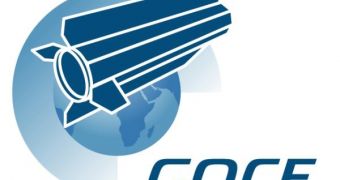Dubbed “the most beautiful satellite ever built,” the European Space Agency (ESA)'s Gravity Field and Steady-State Ocean Circulation Explorer (GOCE) satellite is going to launch today, at 1421 GMT, from the Plesetsk Cosmodrome, in northwestern Russia. The goal of the mission, which has been continuously postponed over the last three years, is to scout otherwise-unaccessible volcanic regions, as well as to record tiny variations in the gravitational pull of our planet in several key sectors. This will give scientists a better view of the forces that make the oceans and other waters move the way they do.
If GOCE's mission is successful, then scientists all over the world could finally set up a worldwide system of recording heights anywhere on Earth. Such a deep study is required, if this objective is to be accomplished. The satellite will also attempt to determine the geoid with an accuracy of 1-2 cm. The geoid is the true physical way in which the Earth looks like, as opposed to the idealized geometrical figure of a reference ellipsoid.
That is to say, while in reality the planet has peaks (such as Everest) and pits (like the Mariana Trench) totaling a difference of more than 19,000 meters, the geoid only records the means of these values, thus exhibiting a variation of less than 200 meters.
“Our current knowledge of the Earth's gravity is incomplete. Gravity is the force we experience daily; it keeps our feet on the ground. But there is this general misconception that it is constant everywhere on the globe, which is not true. If we go to the North Pole, we will weigh more than if we are at the equator,” Danilo Muzi, who is the GOCE program manager at the European agency, explains.
The gradiometers and accelerometers found aboard GOCE are the craft's main instruments, mission experts say. “This is a very complex instrument. It is, for sure, the most sophisticated gradiometer which has ever been prepared for a satellite,” the scientist who has led the satellite's production process in Italy, Andrea Allasio, shares.
“We have one comparison that we often make. Imagine a snowflake, which has a fraction of a gram, slowly falling down on to the deck of a supertanker. The acceleration that the supertanker experiences from that snowflake is comparable to the sensitivity of our instrument,” Goce Mission Manager Rune Floberghagen tells the BBC News.

 14 DAY TRIAL //
14 DAY TRIAL //